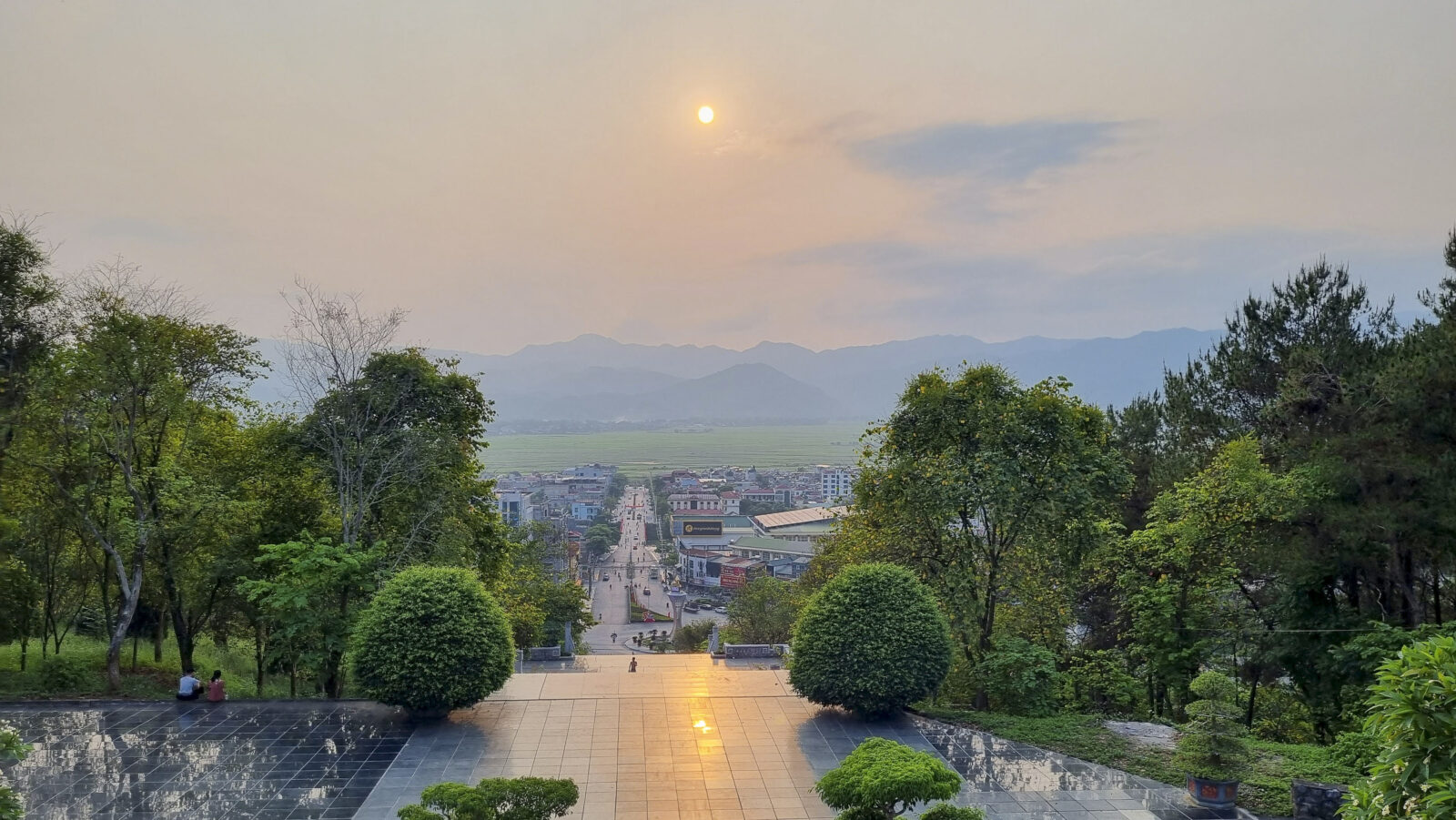I have spent the majority of my time in Southern Vietnam, venturing to Hanoi a few times but seldom over the DMZ between the old North and South Vietnam.
For me, the old South is a curiosity that I enjoy seeking an answer for. The North is somewhere that has not changed since 1954 and the establishment of both countries. The North is devoid of modernist architecture and the magic of the 60s that is so visible everywhere from Hue to Phan Rang, Phan Thiet to Ha Tien. The South also has a lot of strange and interesting cultural influences such as Khmer and Cham cultures, thus my efforts have been focused from the tip of Cà Mau to the Laotian Border at Lang Vei and everywhere in between.
However, it was time to change all that.
French Indochina and colonialism are something that never rested easy with me. Perhaps it is my outlook on empires and that colonialism is to me abhorrent, however it is certainly omni present in Saigon, with the ever-depreciating number of beautiful old villas around the city. It is also quite visible in the countryside through the former Michelin rubber plantations. Yes, one can point to the café culture as one positive, indeed the go to food for a massive amount of the population is a baguette made with rice flour (Banh Mi), so was it all bad? Yes, having seen the Con Dao prison system, the colonial prisons in Buon Ma Tout – a coffee and a sandwich won’t sway my mind. Maybe it was thus, as my perception of colonial France in Vietnam was so tainted, that this section of its recent history was of little interest to me.
I recall watching a documentary where Lyndon Johnson was quoted in reply to updates on Khe Sanh and Tet as saying : “I do not want any Damn Dien Bien Phu.” That is probably where my permission to be interested in this one historical event stemmed from.
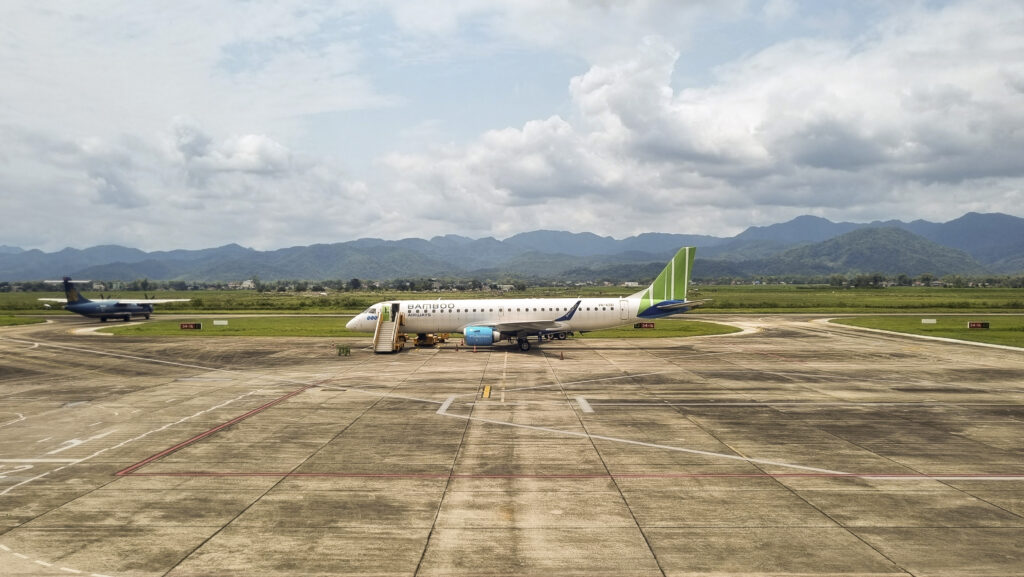
My better half as per standard operating terms would accompany me on this venture. We had a specific time frame of 4 days including travelling days to get from SGN to DIN (DBP airport – which is actually on the foot print of the original air strip). So we would fly Vietjet x SGN to Hanoi, wait 4 hours then fly to DBP. Return was a far easier affair, direct DIN to SGN.
First leg SGN to HAN was relatively smooth. Our first internal flight since reopening from C19. A rather banal A321 to Hanoi and as we taxied in, the most intense weather system I have seen in years descended on the entire airfield reducing visibility to maybe 100m. Apart from being impressed by it, my main concern was our onward leg Hanoi-DIN, which was in a small and not so stable turboprop ATR 42.
A few hours passed, I had the weather on my phone and it looked very much like the system that blew through Hanoi had made its way westward towards DBP. This was going be fun.
All in all, the flight was not that much of a big deal. Descending in towards DBP airport, which is in the middle of a lush green and darker green valley, you get some lateral movements as the winds plough over and down the mountains. I managed to make out what looked like battlefields, but I convinced myself they were dried up rice fields. Surely there are not multiple battle fields scattered around the valley? I had a diagram already on my phone of the various strong points but I was struggling to overlay the new topography / city / roads with it. Anyway, touchdown, taxi in, the ramp would take not more than 3 ATRs or short field jets, I could see through the baggage hall to the road outside. This was remote. It also had, what my wife referred to once as, the Laotian Fire Winds. The wind was akin to opening an over door and getting a blast when it blew.
Next stage – the hotel, which was supposed to be a 20-minute walk away from the airport. Don’t walk if you are going to DBP. That 20-minute walk was like a death march through a desert. We arrived at the hotel, I was burnt, red, sweating, in need of water and happy to get out of the sun.
With our temperatures lowered and a bearing sourced, we headed out on a rented motorbike. I had a few starter sites. Hill A1 / Strong Point Eliane 2, the victory museum across from it and the military cemetery.
DBP Town is based around 3 large roads, Y shaped converging in the center at a roundabout. The town itself is very much history tourism based, but it is also a center for the rural communities scattered around. I started to see members of the Thai ethnic minority around, mainly women, who wear their hair up in this vertical bun fashion. Many of them were on the way to the market, bringing their produce to sell.
Hill A1 / Eliane 2

You enter in via a gate on the main road, aptly named, Vo Nguyen Giap Road. Purchase the ticket, I believe it was VND150,000 and started an upward climb on a path. I noticed what I thought were recreations beside the pathway, barbed wires, and trenches ascending beside the pathway. Turns out they are not recreations. On closer inspection the fencing is real. The rusted, bent, smashed metal bars around which the wire is fashioned, is testament to something destructive happening here in the past. We kept walking up towards the top of the hill, where a M24 Chaffee is exhibited, its barrel hanging low. A small hole in the front armor tells me how this and probably its crew passed.
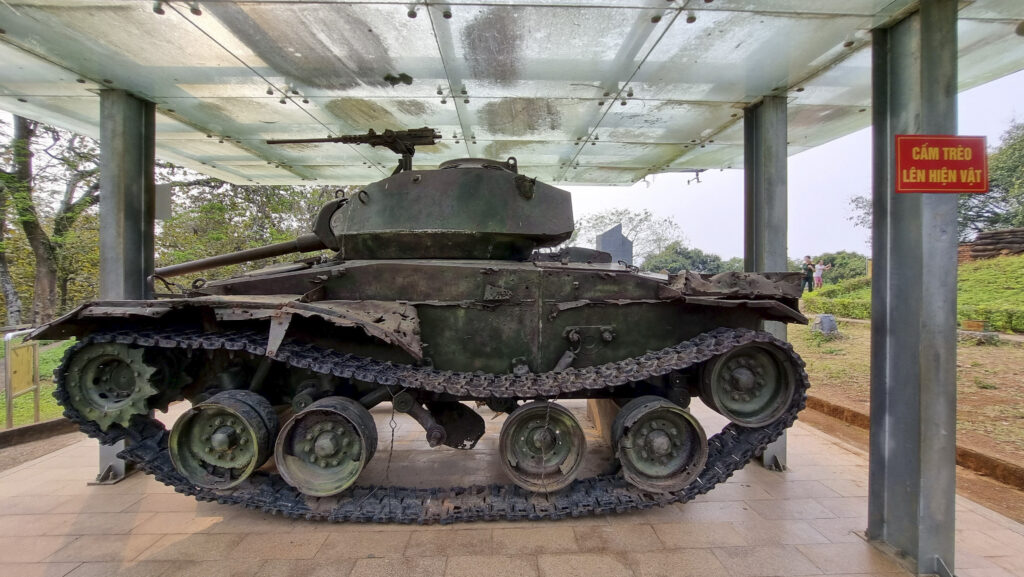
Following on from this, we start to see trenches zigzagging their way out all directions from the top of the hill where we were. I notice that we are standing beside a bunker, thus I went down into it. It went on and on, various tunnels spanning out from the centre. It was muddy down there, and dark. Notice a lot of PSP used in the construction of the bunker.
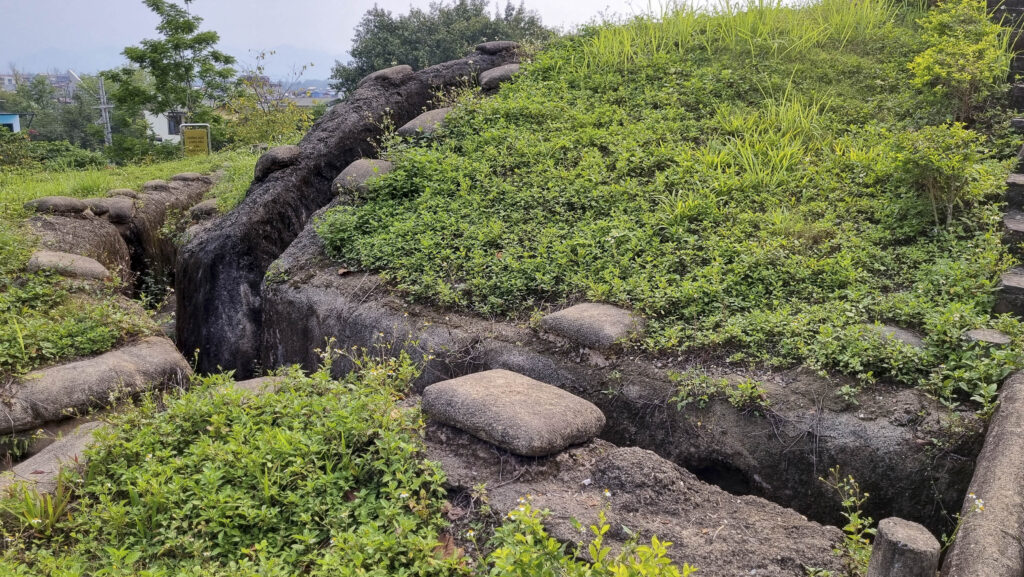
We walked up to the top where a monstrous crater dominated the area. All the dugout areas, trenches, and this crater, seemed to have been sprayed with a kind of concrete for preservation purposes. I guess without this and given Vietnams rains, there would be nothing left by now if it had not have been done. That said, it is like the green fields have been cut open, these grey lines making strange patterns in the hillside. The crater it turns out is from a massive underground mine the Viet Minh tunneled under a French bunker.
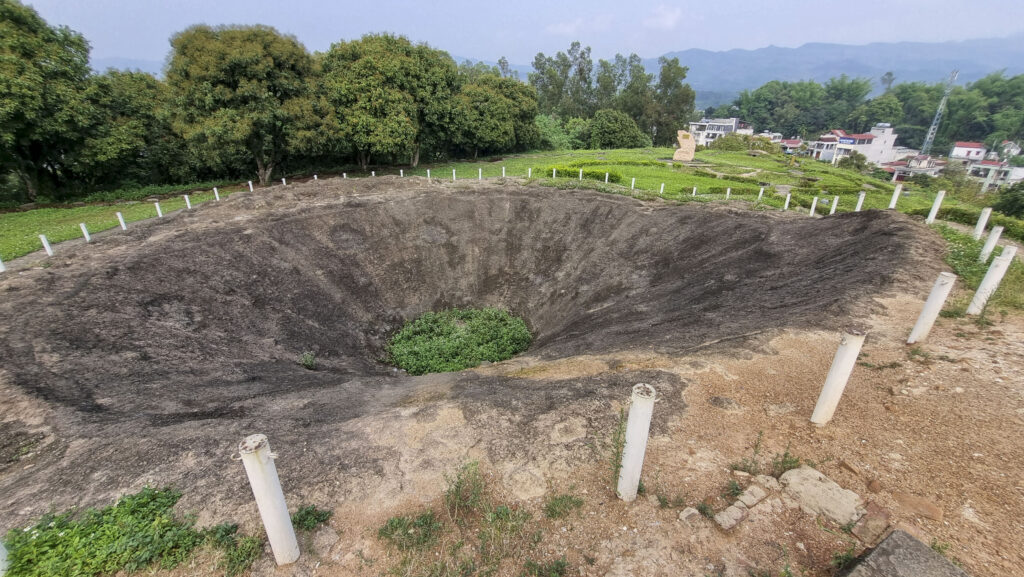
I worked my way along various trenches, they are probably 1.7m average depth, some leading off to outlaying small machine gun nest type enclosures, the farthest point of each web of trenches, looking out at the ground below, the open descent towards the bottom of the hill. I cannot imagine what fighting up these hills was like. Equally as difficult to fathom was the bombardment which these strong points underwent. These trenches being the only means of cover. The majority of these trenches, intersect at various points, they are steep inside, it is very easy to get confused as to your direction. If one does jump down into a trench, note you will find, bugs, lizards, thorns that stick to your clothing by the 100 and holes covered by foliage. I don’t think it is meant to be done, but I am glad I did.
I made my way, in the trenches, all the way back towards the top of the hill. As I climbed out covered in mud, thorns and sweat, I was greeted by 2 old smiling Vietnamese veterans in full uniforms and medals, they pointed at me and said “Phap” – France.
We then walked back down the way we came passing easily 100 veterans on a tour, and, not that I minded anyway, having to say, “Hello, No I am not French, I am from Ireland. Thanks. Bye” to easily 90 of them. A lighthearted moment there.
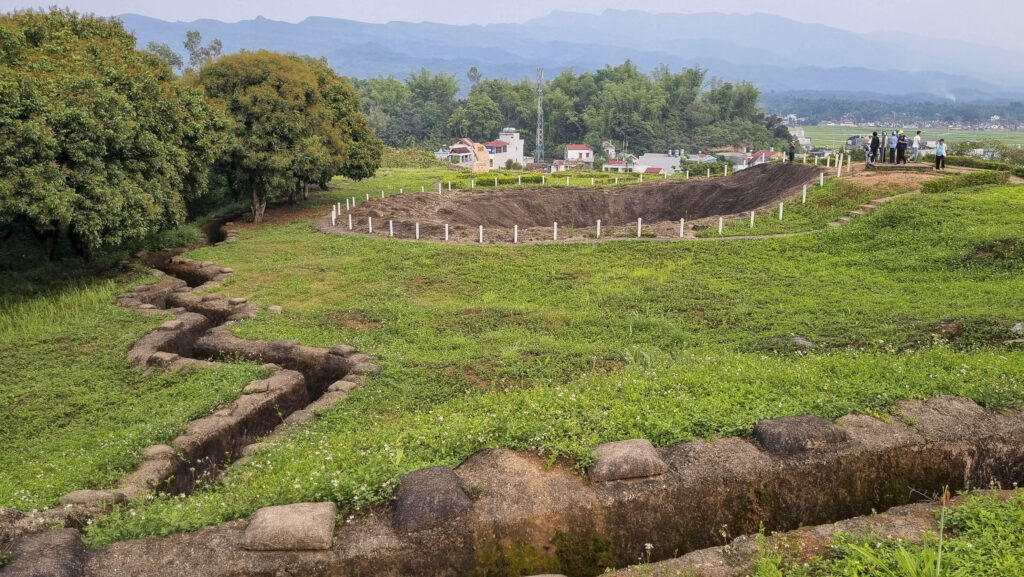
We then went to the Martyr Cemetery which is left out the main gate from hill A1, across from the Victory Museum. A very clean, and well-kept military cemetery and the vast majority of graves are those of unknown Viet Minh soldiers.
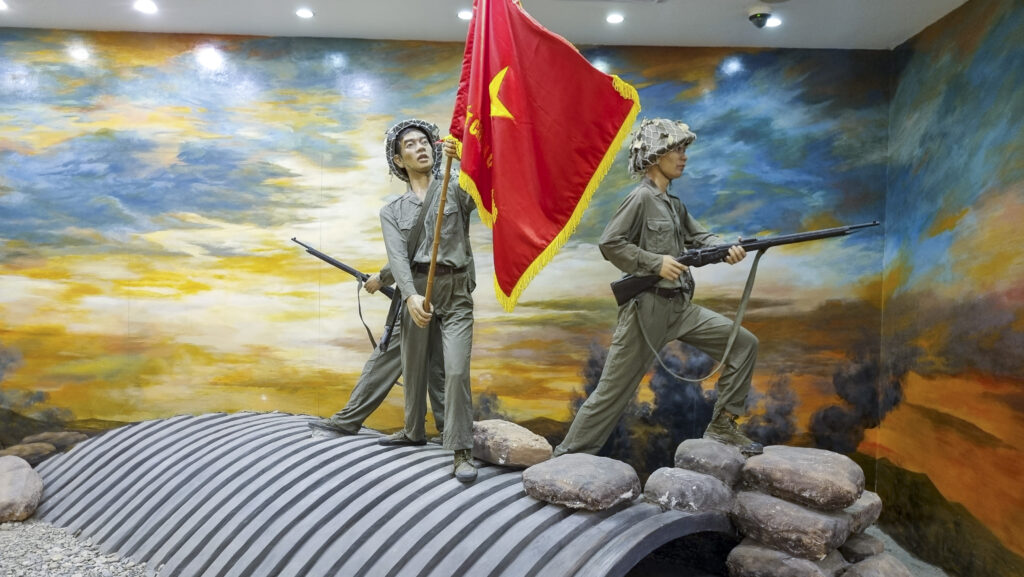
The Victory Museum across the road was very much as you would expect it. It is certainly a higher standard than a lot of provincial museums, however it is in the style of the victor and I couldn’t help but notice how ragged and ugly the mannequins of the French soldiers were compared to the chiseled Viet Minh Heroes. It has quite a large number of exhibits and is definitely worth a visit. I don’t think the ferocity of the trenches I was in an hour earlier had sunk in as I reviewed black and white photos of Hill A1.
Võ Nguyên Giáp
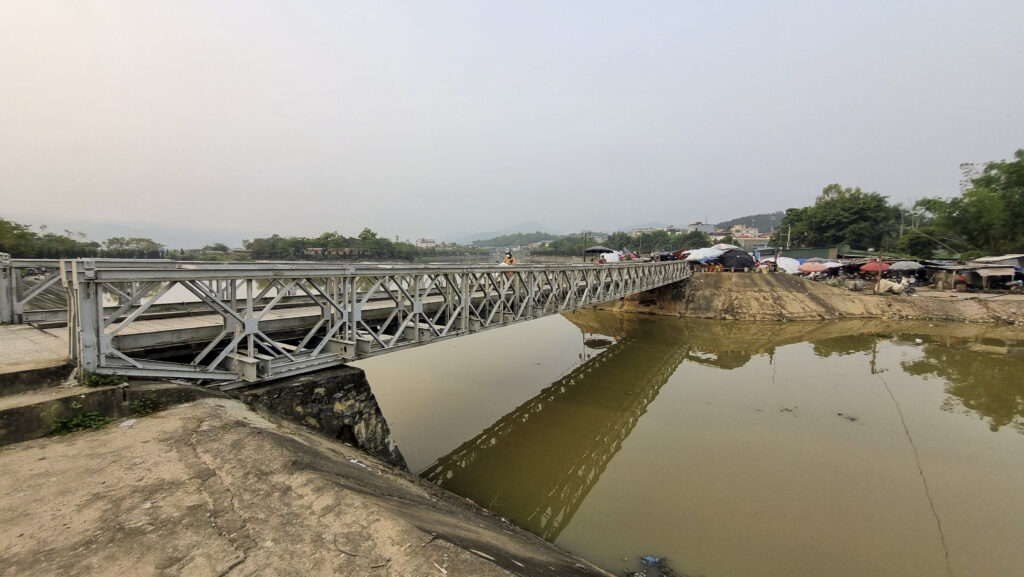
Day 2 started off early with some exploration of the town. I didn’t start out with the objective of finding any military relics, but it is very much the elephant in the room in this town. We headed to a market in the morning, the main market, which was fascinating, usual color and chaos of a Vietnamese countryside market, and as I walked across a bridge, I found myself looking at it closer and realizing it was a bailey bridge by its trade mark rivets. Confirmed it when I got to the end and ran around for a look. This market was located right at the bridge that connected strong points Eliane and Junon. Across the bridge there were remnants of an artillery piece and on from that again a smashed Chaffee M24 with the trade mark barrel droop. I was literally stumbling over military history. It is however amazing that the buzz of life, the market and all its activity has enveloped these war sites. The old is as much a part of here as the new is.
Side note, I did get the fright of my life when I sent over to the tank, for a look, only to find an old man asleep inside it. In his bed. It was his shelter.
It was still early in the day and we had a mission to complete. Vo Nguyen Giap’s command complex was located in the mountains around 30km from DBP. It had been a while since we motorcycled in rural Vietnam, that said we hit the road. We are close to Laos at this stage, so that scorching wind is blowing strong as we plough through the late morning. As we ventured away from the town, I noticed the housing changed to stilted houses made from very ornate wood. It was very quiet. These are the ethnic Thai villages I had heard about, and they were beautiful.
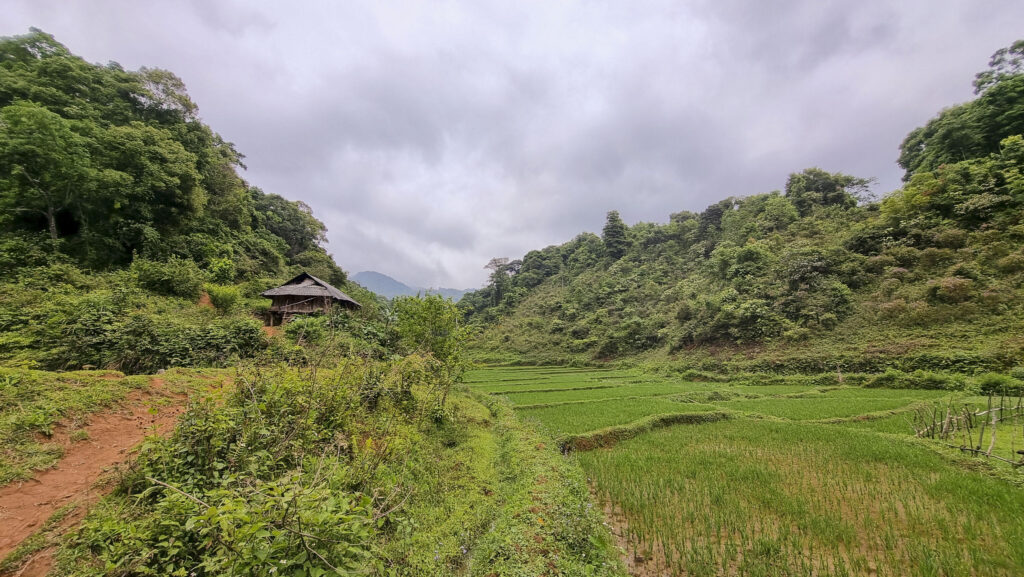
After an hour and a half including a massive wrong turn leading us 2 km into someone’s garden in the jungle, 3L of water and a few swear words, we arrived at the Bunker Command complex. There is a massive car park, etched into the side of a hill, a steep set of stairs leading upwards to hillside jungle and a ticket office with no one in attendance. So only one thing for it, up the stairs we went.
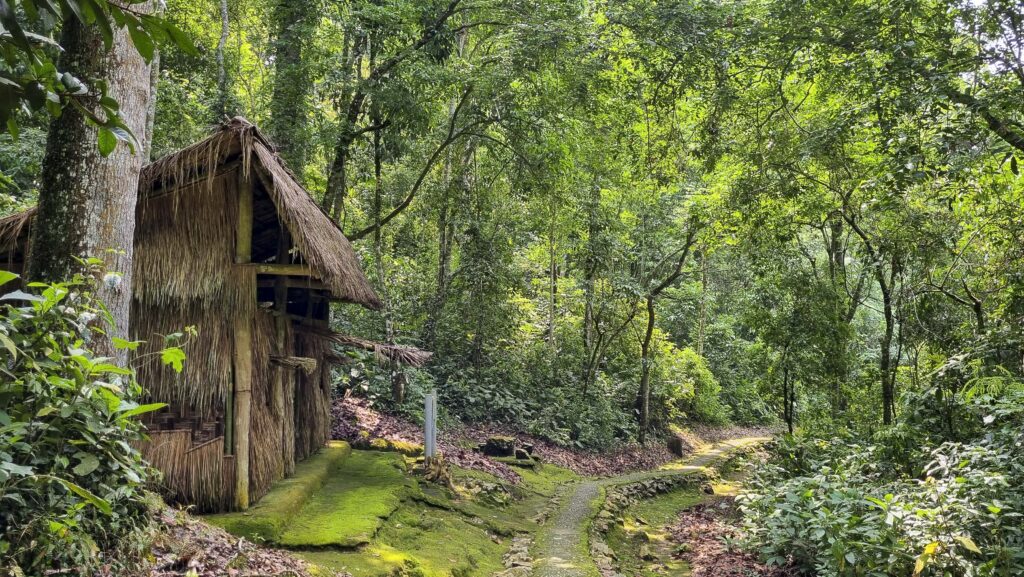
The path went on, quite steep in sections, for maybe 3 km, and we came across some small streams and bridges with some local kids playing. We also met some ethnic Thai ladies that tried to sell me some strange silver currency, we eventually settled to buy some water and kept going. Eventually some small bamboo huts start to appear, Vo Nguyen Giap’s office and bedroom, his meeting room, then a tunnel into the hillside which leads out to further small bamboo huts and various support buildings. The complex is deserted which really adds to the experience. Its proper jungle, trees, heat, bugs, noise, and silence.. no human noise just nature. It is amazing to think this is where the command and control for DBP was carried out. This is where Vo Nguyen Giap was, this was his place, he lived here for months, planning, thinking, deciding. There is a strange connection to the man who’s picture I have seen so much of, a connection to him through standing here. I feel a presence.
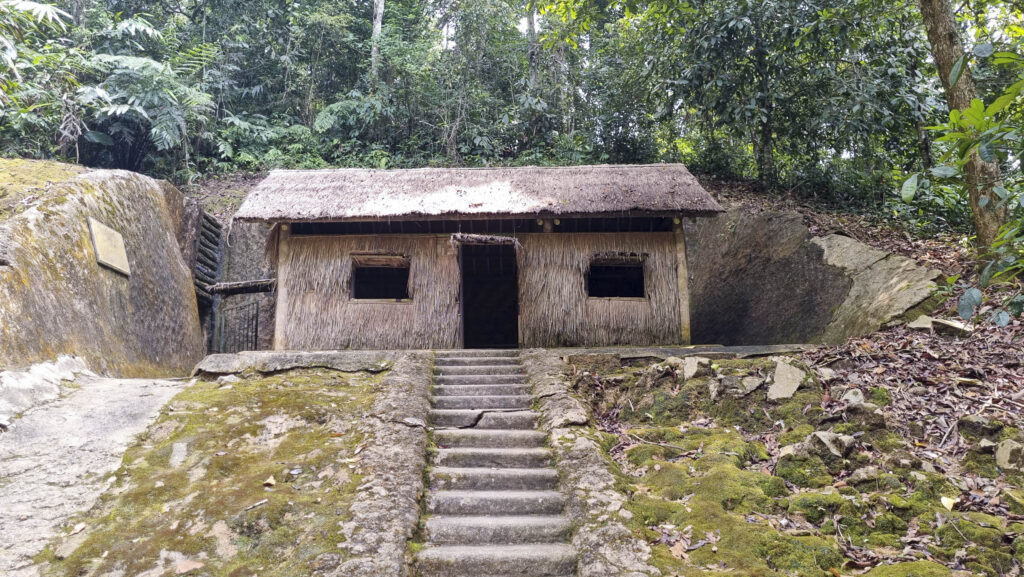
So we wrapped up, made our way back to DBP before dark, rolling through these ethnic Thai villages, and called it a night. There is not too much to do after dark in DBP unless you are a 16 year old motorbike enthusiast.
Last Day – Strongpoint Beatrice
We arrived around 9am, to a forecourt that was essentially hidden off the main street / Route 41, up an alley and behind the facade of buildings that cover the hill from view when you are on the road. In through the gate, and there is no one around.
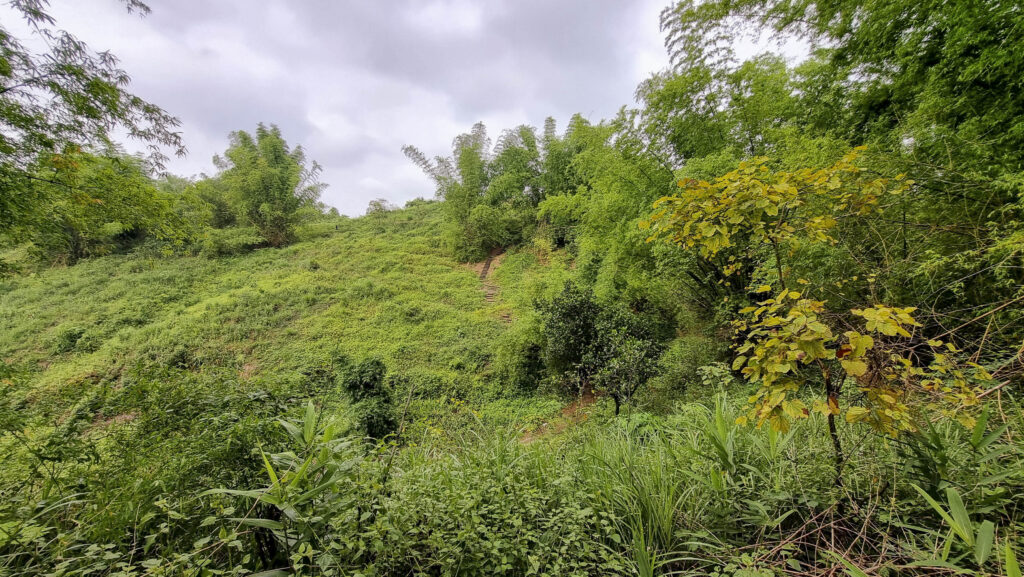
A mysterious set of steps make their way up through the vegetation towards the ever rising hill. The French really picked these places well. I would say without the steps, an ascent by foot on the grass, you are looking at 25/35degree angles. Anyway we get to the top of one hill, looks to be covered in tombstones, but they are actually markers for various actions that were said to have occurred here by Viet Minh. There are references to grenade attacks, and as we get closer, the thick grass, starts to yield its secret. There are trenches, dug outs, roofless dug outs, deep holes everywhere. You cannot see them until you are right on top, you can’t see them at all in a lot of cases. You need to be really careful here, you could end up falling face first through a dug out.
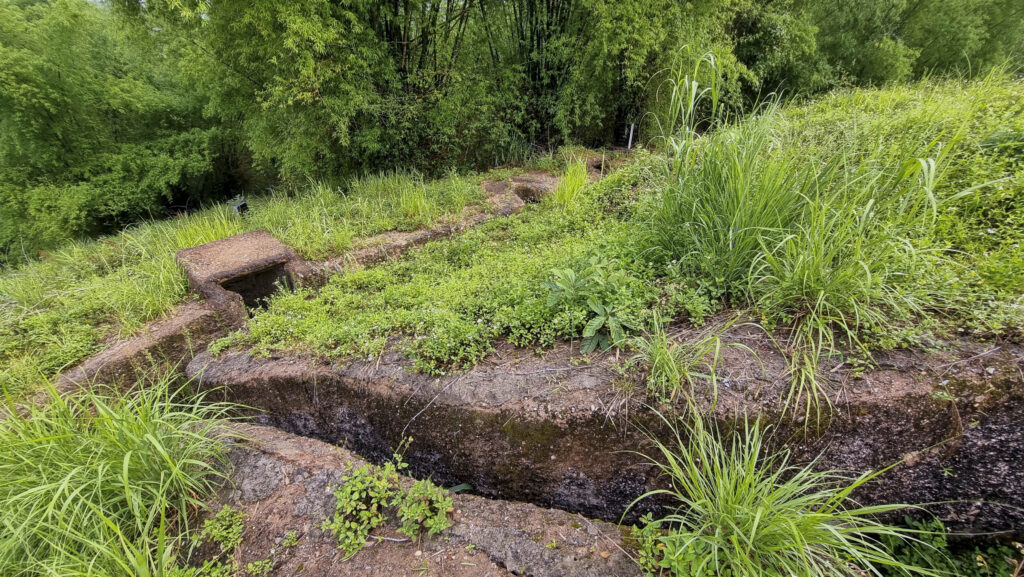
After finding our bearings, again the whole hillside is tattooed with this zigzag trench system, dug outs machine gun nests and so on. This is amazing. Its not in anyway manicured, its very raw, but it’s also not overly safe. The trenches are hybrid concrete sprayed, again preservation, so you really need to watch for disintegrating edges.
We make our way over to the other hill which from the top of this hill, (which has an amazing view again of DBP) it was probably in a line 100-150m but took us 30+ minutes to descend this hill and ascend the other hill. This hill has a lot of spruce type trees on it, giving the ground this carpet like effect. Said carpet covering up holes and trenches one could easily end up in, so again, we needed to be cautious.
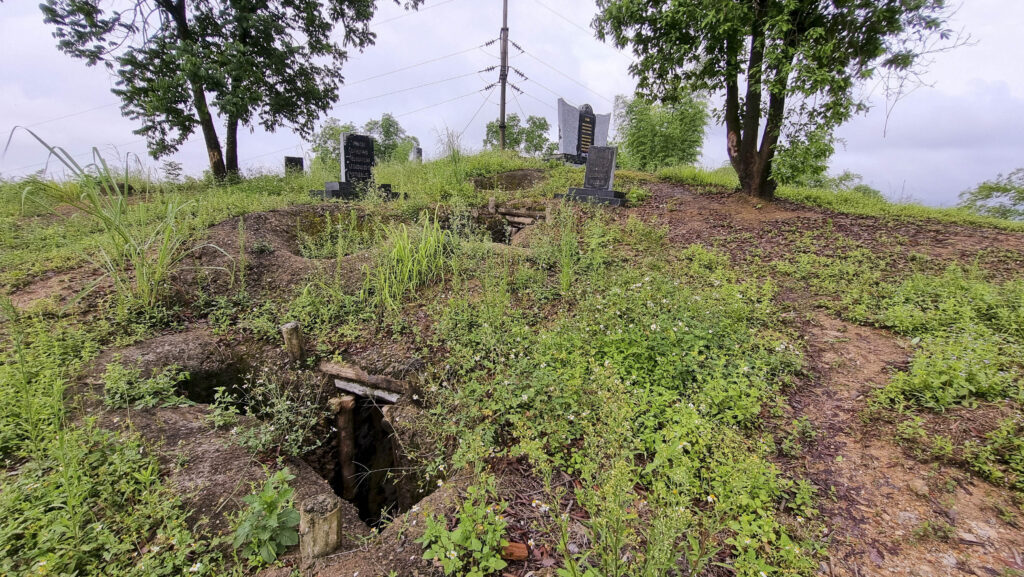
I found some unrestored trenches & some collapsed dug outs on the peripheral of this hill. Alas it was time to leave, we needed to get back and get our flight.
We made our way back to the hotel, and ordered a taxi this time, to the airport, the whopping 2.50USD fare making our initial arrival stroll all the more laughable.

Went through the usual motions for flying, we arrived, checked in and were through security in literally 10minuites. Bamboo airways Embraer sitting outside waiting on everyone, we boarded, and just as we rotated, to the right of the runway around 100m away, a lone Chaffee tank sits in a field, its barrel drooping. What a parting gift.
Final thoughts
I had never really considered the ferocity of trench warfare as something that took place in Vietnam on such a scale. I had managed to see 2-3 strong points, with their trenches, there are easily another 2 to 3 to see. Scattered all around hidden in plain sight are 105s , tanks, aircraft propellors. This area, this town, these hills were the site of some of the most ferocious fighting seen in French Indochina. The Vietnamese never really disclosed their death toll officially. To be in DBP, to visit these sites, to go off into the mountains, to sweat the Laotian Fire Wind is to feel perhaps the smallest of similarities to what took place here.
I have changed my mind as to the soldiers that fought here on behalf of a colonial empire. These men fought in a battle comparable to the Hürtgen Forest, Iwo Jima, The Battle of Bloody Ridge, Khe Sanh many paying the ultimate price. The Viet Minh and Vo Nguyen Giap toppled a world power, found their path to independence. This place & these hills deserve a place on any trip to Vietnam. What happened here changed the world. It changed my mind too. CMC
